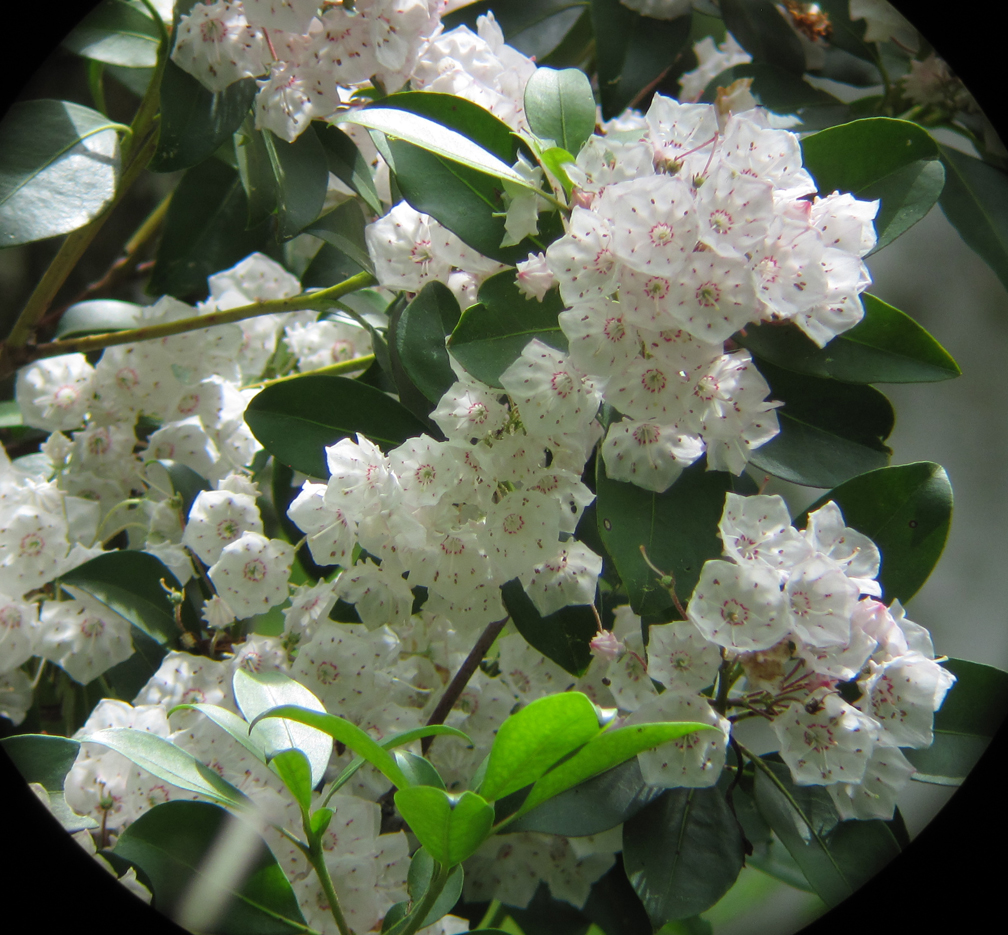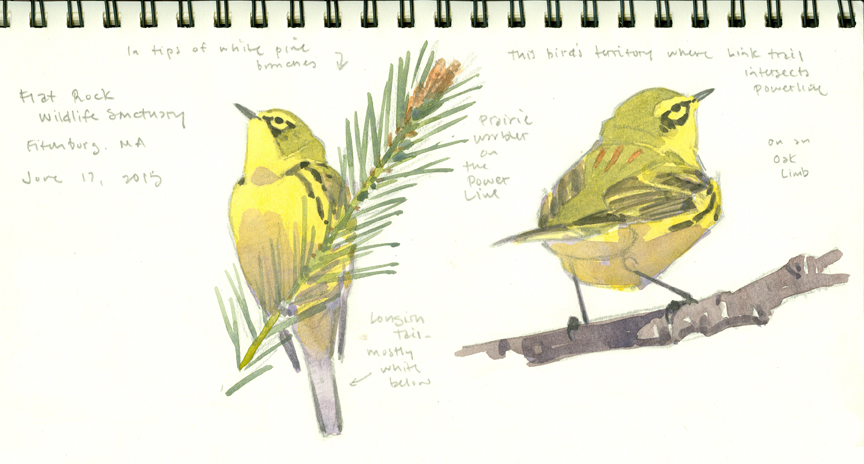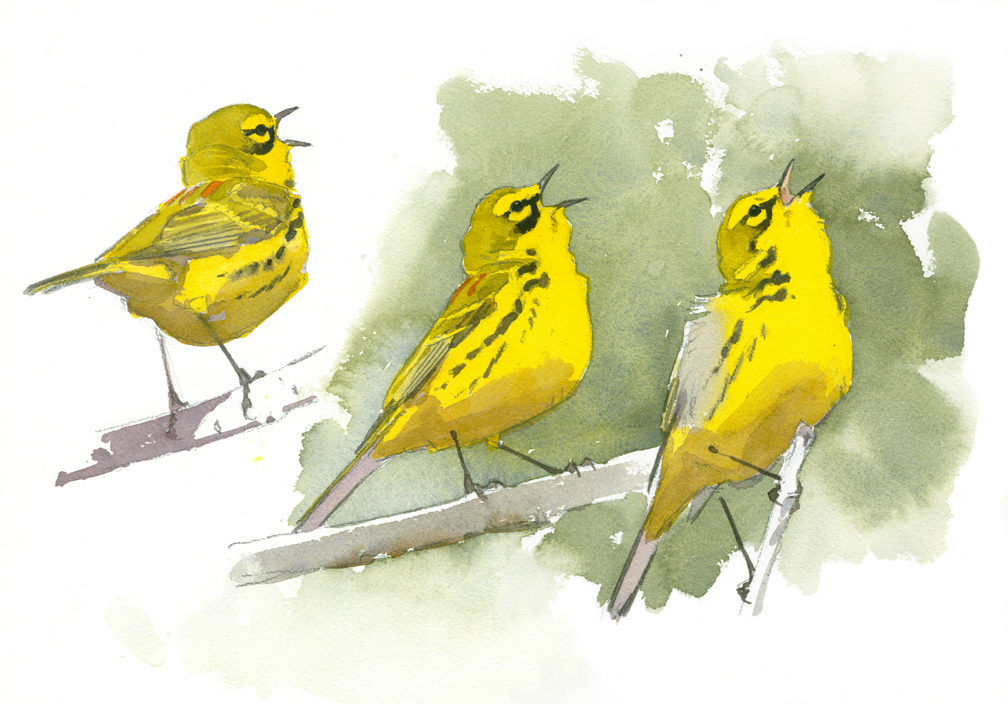This is from a series of posts by MABA resident artist Barry Van Dusen
Flat Rock Wildlife Sanctuary, Fitchburg, MA on June 17, 2015
The mountain laurel is in full bloom as I hike up the Loop Trail at Flat Rock Wildlife Sanctuary in Fitchburg. I admire the many stately beech trees in the forest here, their smooth gray bark dappled with sunlight. Ovenbirds and towhees sing from the understory.
As I near the power lines on the Link Path, I hear the unmistakable song of a prairie warbler (certainly one of the easiest of the warbler songs to learn and remember). With gentle pishing sounds I lure the bird closer until it’s singing from the top of a white pine right above my head. I sketch furiously as it moves to nearby oaks, singing all the while.
Up on Flat Rock Road Trail the forest is drier and more spare, dominated by oaks and pines of moderate height, none very tall. The trail itself is bare bedrock. With every step my feet are in contact with the bones of the earth. Arriving at “The Bald”, I expect to get a view (as advertised on my trail map), but the trees have evidently grown up since the map was published, and no view is to be had, at least at this time of year.
Looping back on the powerlines I pass several boggy depressions and notice a calico pennant perched on a short stalk. Dragonflies are good models for the field artist, since they choose a favorite perch from which to hunt, and return to it again and again. With my telescope, I can focus on that perch and be assured that the odonate will soon return. Back at the meadow next to the parking area I discover many more calico pennants, and decide to do a series of studies on a piece of hot-press watercolor paper.
Curiously, none of the pennants are the bright red adult males. All the individuals I observe are yellow – identifying them as either young males or females.





